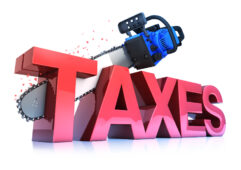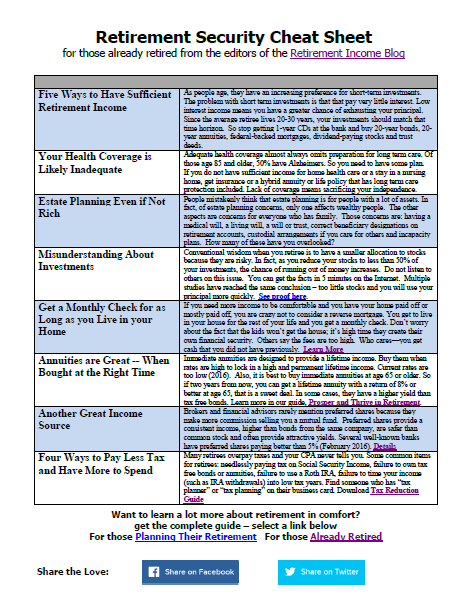You have worked hard to save enough cash for a worry-free retirement, and finally, it is here. But do your retirement strategies account for the order in which you convert retirement funds into income throughout retirement? And did you know that the sequence in which you spend cash from different pots can make a difference in your disposable income and quality of life?
If you are like the majority of retirees, you have a a few different retirement assets: a 401(k) program, an Individual Retirement Arrangement (IRA), a tax-deferred annuity and of course investments not in tax-sheltered accounts (e.g. stocks, bonds, mutual funds). You of course want the income from those assets to survive as long as possible. But unless you have considered this in your retirement strategies for investing, it could cost as much as $100,000 over a lifetime for a middle income tax payer.
The logic is as follows regarding the income tax facet of retirement strategies for harvesting assets. Whenever you take $1 from your Individual Retirement Arrangement, you only have sixty five cents to use simply because you must pay tax on that dollar. But when you take $1 out of your non-IRA brokerage account, you've a $1 to spend because those funds have already been taxed. So the general rule for smart retirement strategies is to use up all of your taxed cash first (also the principal!) prior to tapping your retirement accounts. Of course, there are other elements to assess along with income taxes but the focus here is on the income tax advantage of using your different pots of money in the correct spending order.
By spending your tax sheltered funds last, you will defer as Long as possible (and perhaps avoid in your lifetime) the payment of taxes due. Less tax = more for you to spend.
Questions you might wish to ask: Is it more tax-advantageous to tap into your 401(k) program first, or to sell investments with a lower rate of return, including U.S. Treasuries? Will liquidating your IRA or your 401(k) program first make a difference? A few of the factors you will wish to consider when determining how you can effectively disperse your retirement assets include the projected rate of return, the taxation on the gain, and the distribution rules.
Some retirement advisors will show you the way to increase your revenue stream would be to put your cash into more aggressive investments or pursue a complex investment allocation scheme. But the proper liquidation order of your retirement investments can potentially assist your revenue stream more than the particular investments you make. That's because different assets have different features and benefits, and are subject to different tax regulations, so liquidating them at appropriate times is profitable.
As an instance, let's say your retirement financial planning has produced a portfolio that includes a 401(k) program, a tax-deferred annuity, some stock, a municipal bond fund, along with a CD, each with different amounts and each with a various expected rate of return. Which should you liquidate first? According to Deutsche Asset Management, the harvesting order detailed below would be the preferred retirement strategy. Of course, each person's financial scenario is different, and therefore the correct liquidation order for you may be different.
Sample liquidation order of retirement assets
| Asset | Expected return | Current market value |
| CD | 2% | $50,000 |
| Municipal bond fund | 4% | $150,000 |
| Stock | 8% | $100,000 |
| Tax-deferred nonqualified annuity | 8% | $50,000 |
| 401(k) plan | 10% | $250,000 |
Source: Deutsche Asset Management, as of April 2006. This example above is hypothetical and for illustrative reasons only. It is not designed to stand for efficiency of any specific product.







Leave a Reply